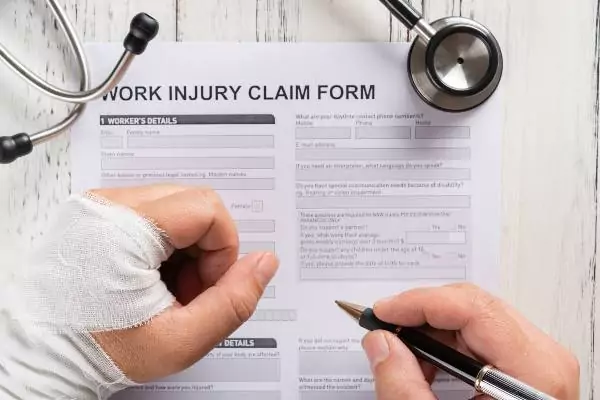Workers’ compensation (or workers’ comp) is a form of insurance, typically required, that protects workers in the event of a workplace injury – regardless of how that injury arose.
If you’re hurt on the job, you’ll have the option to file a workers’ comp claim and potentially get the compensation you need.
But how exactly does a workers’ comp claim work, and how do you file one?
The Basics of Workers’ Comp
Most people have heard of workers’ compensation, but they may not understand the intricacies of how it works. This is a somewhat complicated field, so we won’t be able to comprehensively address the subject in this article. However, it’s prudent to understand the basics.
Workers’ comp is a type of insurance held by employers to cover employees in the event of injuries that occur in the workplace. In most states, it’s required to be held by employers. Even in states where it is not a requirement, it’s commonly held both to limit the liability of the business and to protect the employees working for it.
Workers’ comp covers damages associated with a wide range of injuries, regardless of how they occurred, but only if those injuries happened in the workplace during actual work. If you are injured while on the job, you’ll likely be able to file a workers’ comp claim and win compensation for those injuries. Compensation can include not only medical expenses and prescription medications but also lost wages.
A workers’ comp attorney can help you understand the relevance of workers’ comp as it applies to your injury and guide you through the process. As you’ll see, sometimes a lawyer is necessary to help ensure you’re fairly compensated for your injury.
The Process of Filing a Workers’ Comp Claim
The process of filing a workers’ comp claim usually goes something like the following:
· Incident reporting. First, you must report the incident to your employer. Most employers have guidelines and protocols in place for exactly how this process should occur. In many cases, you’ll be required to report the injury to your immediate supervisor, who will then work with you to file a formal report for documentation purposes.
· Employer filing. Once this report is complete, your employer will file a workers’ comp claim on your behalf. They may require more information from you to complete this process.
· Investigation. After this, there will be an investigation into the accident or injury. Your employer’s insurance carrier will look into the details of the case to determine which benefits are appropriate, if any.
· Decision. When the investigation is complete, a formal decision will be made. You will receive notice of this decision.
· Benefits/settlement. Depending on the severity of the injury and circumstances surrounding it, you’ll likely be entitled to ongoing benefits or a settlement offer. Keep in mind that you may or may not want to accept the initial settlement offer; in some cases, it pays to work with a lawyer to negotiate for a higher settlement or even bring legal action against your employer if they acted negligently. By accepting a workers’ comp settlement, you waive your right to sue your employer.
· Return to work plan. If your injury deprives you of your ability to work, you may also be part of a return-to-work plan, designed to help you reacclimate to your working environment over time.
Keep in mind that different employers and different insurers may vary in how they follow these steps and in which steps they include.
Important Priorities
If you’re injured on the job, these should be your top priorities:
· Get to safety. Get to safety as soon as possible and make sure the area is safe for others to prevent further accidents and injuries.
· Get medical help. Get medical help as soon as possible. Depending on your injury, this may mean seeking emergency medical attention or making a prompt appointment with your primary care provider.
· Follow internal processes for reporting. Follow your employer’s process for documenting the incident, but be sure that all the details are accurate to the best of your knowledge. Depending on the nature of the accident, it might be necessary or prudent to report to OSHA directly.
· Gather evidence. It’s a good idea to gather as much evidence as possible in case you need to prove the sequence of events or prove the extent of the damages done. Photos, videos, surveillance footage, and witness testimony can be especially helpful.
· Talk to a lawyer. Even if you feel good about the settlement offer, it’s important to talk to a lawyer about your options. You may be entitled to more compensation or additional legal action in some cases.
Follow these priorities if you’re ever injured at work. The process can be long, confusing, and complicated, but with good legal representation, it will become much easier to follow and understand.
Keep an eye for more latest news & updates on Internal Insider!










